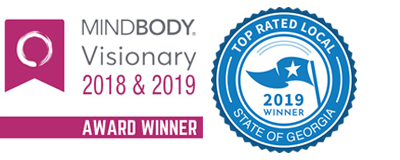
Hypertension, or high blood pressure, is often labeled as the “silent killer” due to its lack of symptoms but deadly potential. It’s a common condition that affects millions of people worldwide and is a leading cause of heart disease, stroke, and other serious health issues. The good news is that high blood pressure is largely preventable and controllable. In this extensive guide, we’ll explore the full spectrum of strategies—ranging from lifestyle adjustments to herbal remedies—that have been shown to effectively lower and maintain healthy blood pressure levels. Whether you’re dealing with borderline hypertension or looking to enhance your long-term cardiovascular health, these practices could make a significant difference in maintaining a healthy heart and a vibrant life.
Understanding Blood Pressure
Before we jump into strategies to normalize blood pressure, it’s crucial to understand what blood pressure is and how it’s measured. Blood pressure reading consists of two numbers: the systolic pressure (the first number), which is the pressure in your blood vessels when your heart beats, and the diastolic pressure (the second number), which is the pressure when your heart is at rest between beats. Ideal blood pressure is considered to be around 120/80 mm Hg. A reading consistently higher than this could indicate hypertension.
It’s also important to note that there are factors that you have control over, and those that are mostly genetic or environmentally influenced. While you cannot change your genetic makeup, there are countless ways to positively impact modifiable elements and influence a healthier blood pressure.
The Role of Diet in Blood Pressure
One of the most influential factors in blood pressure is diet. The DASH (Dietary Approaches to Stop Hypertension) diet is often recommended as a way to reduce blood pressure. It emphasizes eating plenty of fruits, vegetables, whole grains, and lean proteins, while reducing the consumption of high-fat and high-cholesterol foods. Here are dietary changes that could help to lower your blood pressure:
Sodium Reduction
Cutting down on salt is a powerful step toward blood pressure normalization. A high-sodium diet can cause fluid retention, which in turn increases your blood pressure. The American Heart Association recommends consuming no more than 2,300 milligrams of sodium per day (about one teaspoon). For those with high blood pressure, diabetes, or chronic kidney disease, that limit is even lower at 1,500 milligrams per day.
Potassium-Rich Foods
Potassium helps to balance out the negative effects of sodium. Foods high in potassium include bananas, sweet potatoes, spinach, and avocados. Including these in your diet can help lower your blood pressure.
Magnesium and Calcium
A diet rich in magnesium and calcium has been linked to lower blood pressure. Good sources of magnesium include whole grains, nuts, and green leafy vegetables, while calcium can be found in dairy products and fortified non-dairy milks.
Exercise and Blood Pressure
Regular physical activity is another way to manage blood pressure. Exercise makes your heart stronger, making it easier for it to pump blood through the body. Here’s how to incorporate it into your routine:
Aerobic Exercises
Engage in moderate to high-intensity aerobic exercises such as walking, running, swimming, or cycling. Aim for at least 150 minutes of aerobic activity each week, or about 30 minutes on most days.
Strength Training
Adding strength training exercises to your routine can help with overall heart health. It’s recommended to perform strength training exercises at least twice a week.
Flexibility Exercises
Yoga and other stretching exercises can also contribute to a healthy heart. Combining flexibility exercises with aerobics and strength training provides a balanced exercise regimen.
Stress Management and Relaxation Techniques
Stress is a major contributor to high blood pressure. Learning how to manage stress through relaxation techniques can significantly lighten the burden on your cardiovascular system.
Meditation and Mindfulness
Practicing mindfulness can help reduce stress and, in turn, lower blood pressure. Regular meditation sessions have been shown to have a significant impact on stress reduction.
Breathing Exercises
Deep breathing and other breathing exercises can activate the body’s relaxation response, calming your mind and allowing your body to deal with stress more effectively.
Progressive Muscle Relaxation
Systematically tensing and then relaxing different muscle groups can help you identify and respond to stress-related tension in your body, reducing overall stress levels.
Sleep and Blood Pressure
There is a strong relationship between blood pressure and sleep. Poor sleep can lead to increased stress hormones and a rise in blood pressure. To optimize sleep for better blood pressure control:
Aim for Consistency
Try to go to bed and wake up at the same time every day, even on weekends.
Create a Restful Environment
Make sure your sleeping environment is conducive to rest. Keep the room dark and quiet, and maintain a comfortable temperature.
Limit Screen Time Before Bed
The blue light emitted from screens can disrupt your natural sleep-wake cycle. Try to limit screen time at least an hour before bed.
Natural Remedies for Blood Pressure
Supplements and natural remedies can also play a role in blood pressure management.
Garlic
Garlic is believed to have a mild but persistent effect on blood pressure. You can implement garlic by using it in your cooking or by taking a garlic supplement.
Hawthorn
This herbal remedy has been used for centuries to treat heart problems, including high blood pressure. It’s usually taken as a supplement or a tea.
Fish Oil
The omega-3 fatty acids found in fish oil can help reduce blood pressure. They can be consumed as part of your diet through the consumption of fatty fish or taken as a supplement.
Hibiscus Tea
Some studies have shown that hibiscus tea can be as effective at lowering blood pressure as a prescription medication. It has a tart flavor and can be enjoyed hot or cold.
Beetroot Juice
Beetroot contains nitric oxide, which can help open the body’s blood vessels and thereby lower blood pressure. Beetroot juice can be a potent addition to your diet.
Medications and Additional Treatment
For some individuals, medication is necessary to control blood pressure. If lifestyle changes and natural remedies aren’t sufficient, your healthcare provider may recommend:
Diuretics
Commonly known as water pills, diuretics help your body get rid of excess water and sodium to lower blood pressure.
Beta-Blockers
These medications reduce blood pressure by blocking the effects of the hormone epinephrine, also known as adrenaline.
ACE Inhibitors
Angiotensin-converting enzyme (ACE) inhibitors help relax blood vessels by blocking the formation of a natural chemical that narrows blood vessels.
ARBs
Angiotensin II receptor blockers (ARBs) keep angiotensin II from having any effects on the heart and blood vessels, leading to decreased blood pressure.
Your healthcare provider will work with you to determine the right medication and dosage for your particular case.
The Power of Mindfulness and Blood Pressure Control
Mindfulness can play a powerful role in blood pressure regulation. By being more attuned to your body and your emotions, you can better understand and react to the stressors that may be contributing to high blood pressure. Techniques such as meditation, yoga, and mindful breathing exercises can help you achieve and maintain a calm state of mind, which is beneficial for your blood pressure and overall health.
Habitual Lifestyle Adjustments
Incorporating these strategies into your daily routine can lead to lasting changes in your blood pressure levels. Making gradual lifestyle adjustments rather than implementing drastic changes all at once can help ensure that these practices become long-term habits.
The Long-Term Approach to Healthy Blood Pressure
The most impactful way to address high blood pressure is by adopting a holistic approach. This includes integrating several of the strategies discussed above into your daily life, such as maintaining a healthy diet, engaging in regular physical activity, managing stress, and getting enough quality sleep. By combining these approaches, you can take control of your blood pressure and your overall health.
Creating Your Personalized Blood Pressure Plan
Each person’s response to different strategies for managing blood pressure is unique. What works for one individual may not work for another. Therefore, it’s crucial to create a personalized blood pressure management plan. This plan should be developed with the guidance of your healthcare provider and should take into account your specific health history, lifestyle, and preferences. Regular monitoring of your blood pressure and open communication with your healthcare team will ensure that your plan is tailored to your individual needs and that you are taking the most effective steps toward normalizing your blood pressure.
Conclusion
High blood pressure is a major risk factor for serious health conditions. By taking a proactive approach to your heart health, you can reduce your risk of hypertension and its associated complications. Incorporating the strategies discussed in this guide can help you achieve and maintain a healthy blood pressure. Remember, it’s never too late to start taking care of your heart. Every positive change you make, no matter how small, can have a significant impact on your overall well-being. Take the first step today towards a heart-healthy lifestyle, and enjoy the benefits for years to come.


Follow Us